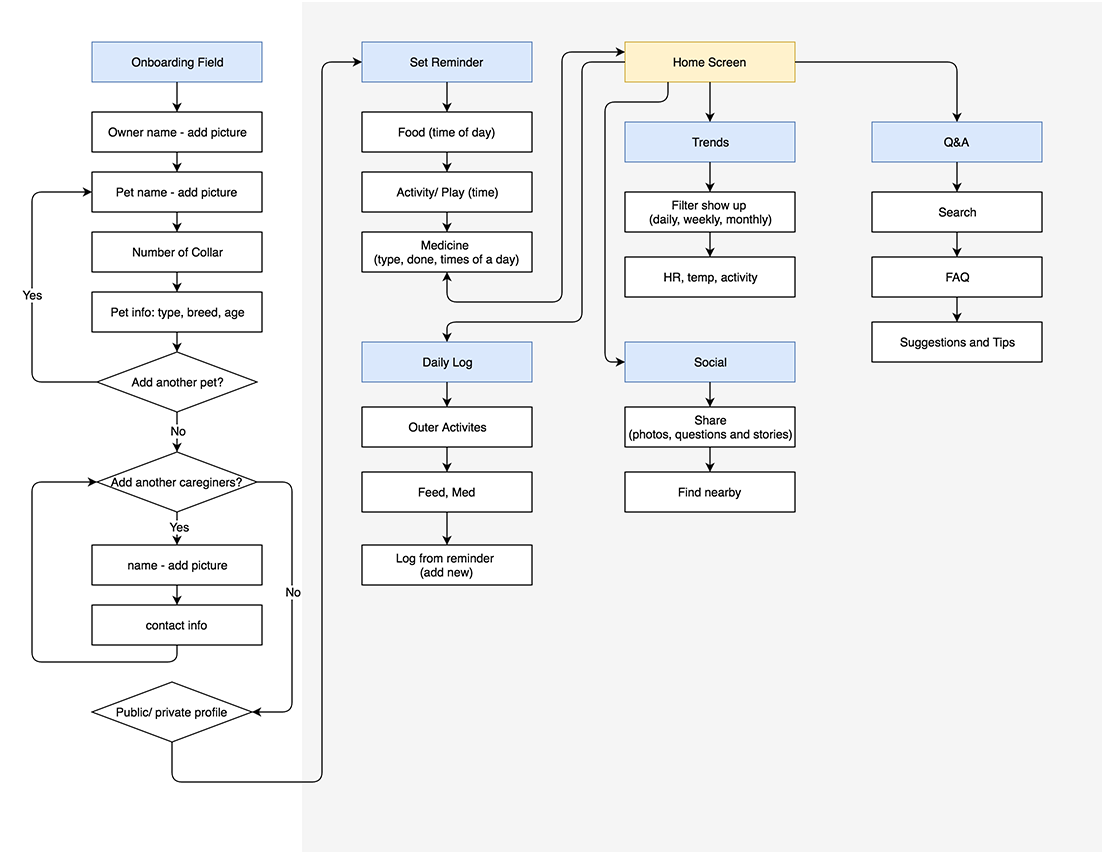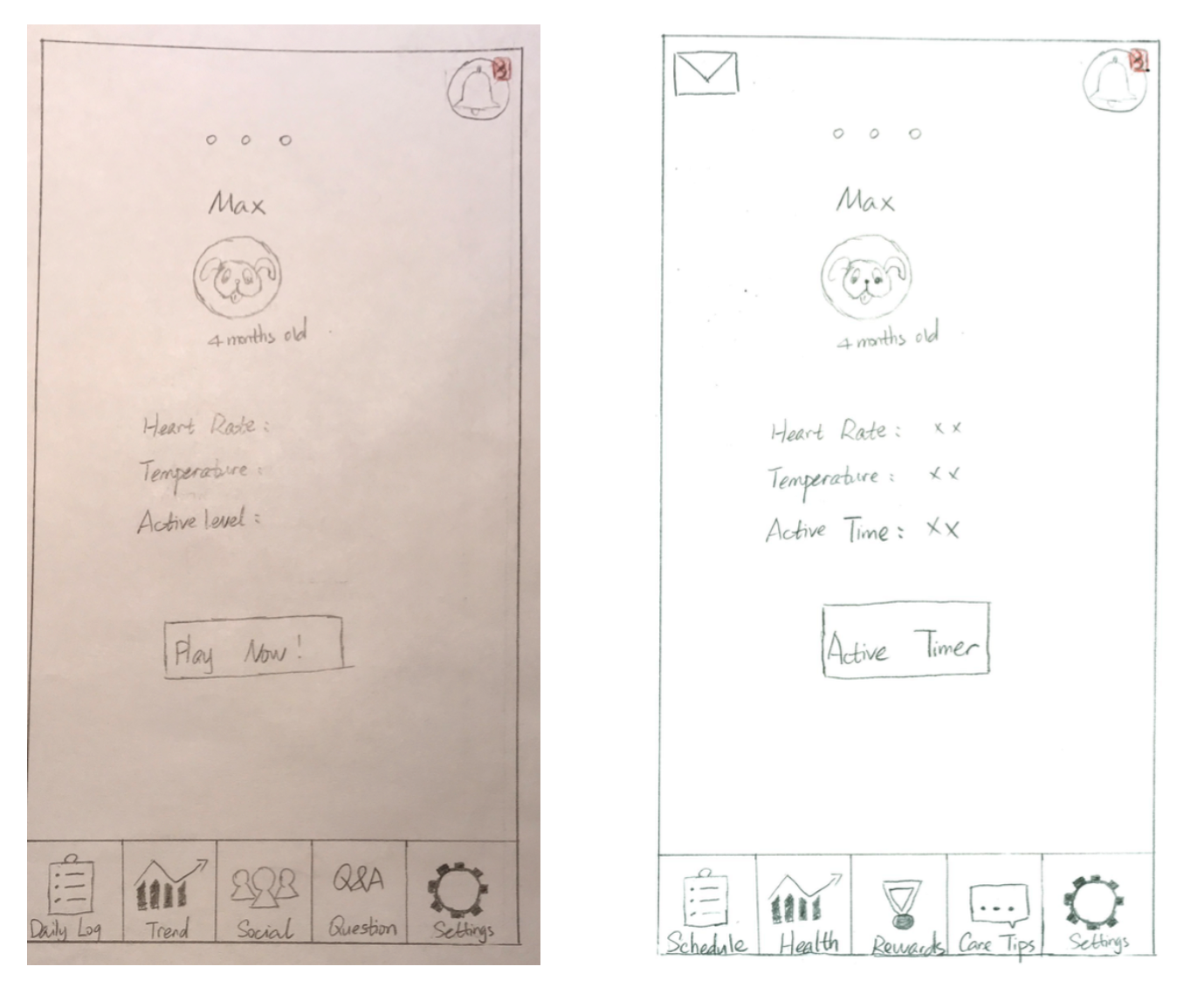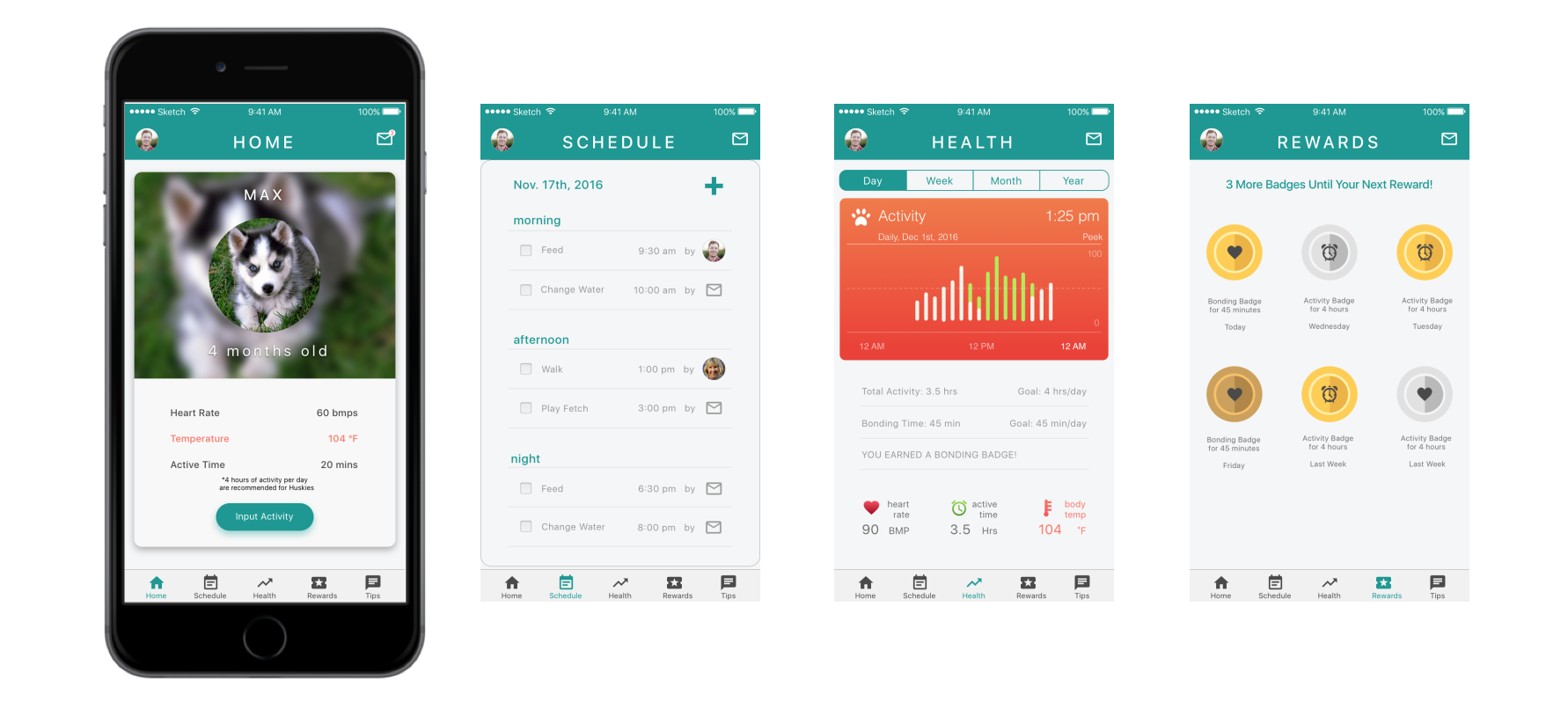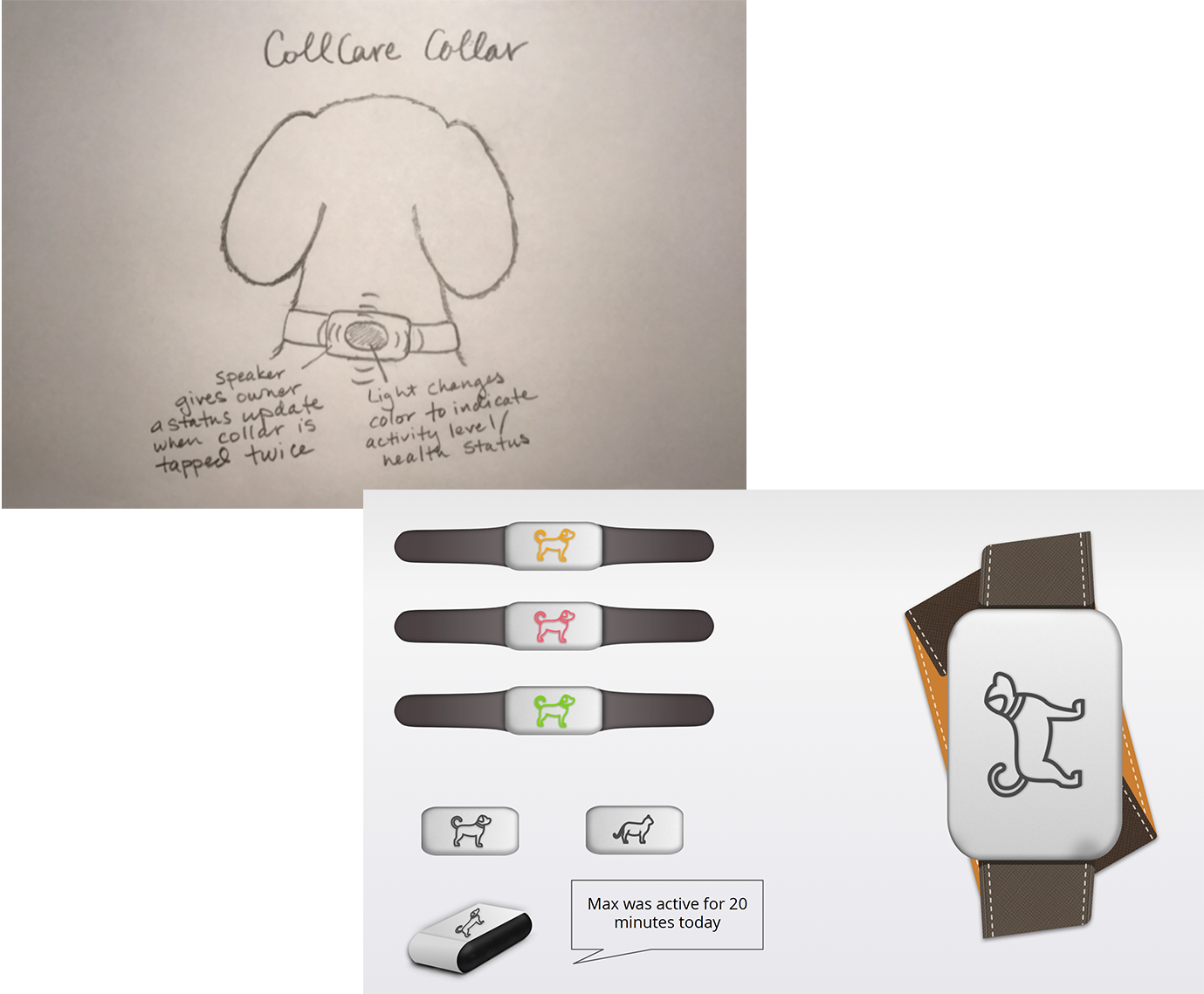Intro
Clinical research has shown that pet ownership can positively affect a person's mental and physical health. Our team wanted to design a solution that allowed pet owners to track their animal's health while encouraging greater owner-pet interaction. We also wanted to offer care advice to enhance the bond they have with their animals. The goals for our product were:
- Monitor pet's activity and health
- Send relevant status updates
- Encourage interaction
- Give owner peace of mind

Research
To better understand our problem space, we chose to triangulate our knowledge with three research methods.
- Secondary Research: I reviewed published academic articles on the health benefits of human-animal bonds focusing on research that made definitive links between pet ownership and health benefits.
- Competetive Analysis: I evaluated potential competitors' strengths/weakness and summarized the shared commonalities to find features they do not have in order to differentiate our product. I focused on the following:
- What are the most important features for users?
- What can we do better than others?
- What should we avoid doing?
- How can we position ourselves differently?
- Owner Interviews: We conducted one-on-one interviews with working professionals and students, who are away from their pets for more than 8 hours per day, to gain insights into the activities and interactions that are beneficial to their mental health and mood.
Findings
- Interaction that involves physical activity (walking or playing), as well as physical contact (petting), proved to be the most beneficial for the owner
- Owners experienced anxiety when leaving pets alone for extended periods of time
- Owners were unsure of healthy levels of activity for their pet's breed and maturity level
- There was often confusion and frustration related to who would carry out particular pet care tasks in homes with more than one caretaker
Personas
We created three personas: A single, nurse with a variable schedule who wants to be able to coordinate care for his puppy, a married professor who wants to be able to tell when her cat is ill and track where he goes, and a child who needs reminders of when to provide care for her dog, such as walks and feeding.

Ideation
Using our research findings as a basis for ideation, we settled on the following features for our design:
- Health status tracking and remote updates to reduce owner anxiety
- Customized recommendations for activity level and food intake based on pet's breed and maturity level to address owner's lack of knowledge and resources
- Caretaker collaboration to reduce frustration and confusion around pet care in multi-caretaker households

We brainstormed and sketched our ideas, then critiqued and picked the most promising ones. We then created paper prototypes for testing.
Prototyping & User Testing
We employed a "test early and often" approach to our design and began with the lo-fidelity paper prototype that could be user tested and iterated upon easily.

We then developed a higher fidelity interactive prototype and conducted user testing to refine and focus our designs. Through User testing we discovered:
- The social feature we included to encourage more activity and interaction through walks and scheduled play dates was met with a lot of resistance. We adjusted the language and replaced the social feature with a reward system that gave owners badges for achieving daily activity goals. These would eventually translate into discounts on pet care products (tied to marketing).
- Users had difficulty with the task of collaboration so we redesigned the input activity and schedule sections.
- Our graphs were unclear so we changed the presentation from line graphs to bar charts.

The final prototype is available to view online.

Next Steps

For this project we were limited to the design of the mobile application. However, the interactive collar is crucial to our overall concept of encouraging more interaction between the pet and owner as mobile devices are often barriers to face-to-face interaction. If we could proceed with the project, the prototyping and testing of this collar would be the first priority.